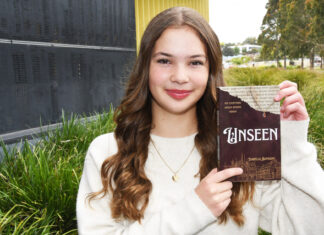Greg was the official stills photographer on the 1953 expedition to Mount Everest that saw New Zealand’s Sir Edmund Hillary and the Nepalese sherpa Tenzing Norgay become the first people to crest the peak.
“Most of the high pictures were taken by me, except those of Hillary and Tenzing on top,” he said.
The British expedition was led by John Hunt, who, along with Hillary, was to be knighted for his efforts.
A year earlier, Greg was part of an expedition to nearby Cho Oyu, the mountain that claimed the life of Victorian policeman Paul Carr earlier this year.
“We didn’t climb it, we had a good time of it,” he said.
Greg said there had been attempts to climb the world’s highest mountain, and after the war Nepal was closed to climbers.
“Before the war, there were many British expeditions to the top, and all failed,” Greg said.
He climbed to within 300 metres of the peak, helping carry gear, and said the aim of the expedition was to get someone to the top.
Hunt made the decision to send Hillary and Tenzing after Tom Bourdillion’s and Dr Charles Evans’ initial effort failed due to an oxygen fault.
“It was important, really, to have been one of the small elite of people that went very high on the mountain,” Greg said.
“It was a team event, so in some ways it’s a shame (I didn’t climb to the top,” Greg said. “There were a lot of people who prepared the route and did the hard work.”
Greg grew up in Blackpool, in Lancashire, England, and started rock climbing in the Lake District in Wales.
He served during World War IIin North Africa and Italy as an officer in the Scottish regiment Black Watch.
Hunt chose Greg as the official photographer for the Everest expedition based on his reputation.
“I was always involved in mountain climbing. I had a long background of mountain climbing on peaks in Europe,” Greg said.
“If you were one of the climbers that were doing things, you just became known.
“It’s like any other sport, if you like – you’ve got to get yourself good at it before you’re asked.”
Greg was 40 years old – the same age as Tenzing – during the four-month trip, half of which was spent on the mountain.
He said despite the isolation, Everest was never completely quiet, with wind and ice falls further down the mountain.
When asked if there was something different about climbing Everest, also known as Chomolungma in Tibet and Sagarmatha in Nepal, Greg said there was and there wasn’t.
“It isn’t different than to be on other mountains and there are great similarities between them,” he said. “It’s special because it hadn’t been climbed – there had been many attempts that had failed.
“There was this tremendous drive to get to the highest peak.”
The expedition was at the start of a remarkable time in history, hardly any of the 14 peaks more than 8000 metres high had been climbed, and Everest was always the apex.
“When you look back and see how many thousands of tourists there are everywhere, including there, it’s a matter of time and history and age that will never happen again,” Greg said.
“It’s just the altitude. The biggest difficulty with Everest is it’s the highest mountain, and oxygen is the biggest concern.”
He said it was a memorable journey, and the last days of climbing near the summit were spent on oxygen.
“There were a lot of happenings on it which were all quite exciting, but I suppose when Hillary and Tenzing came down and said “We’ve done it” – it was a great success and exciting time,” Greg said.
He said given the lack of oxygen, the British expedition’s celebrations were reserved, although there was much back-slapping.
News reached England a few days later – the announcement of the successful journey made on the morning of Queen Elizabeth II’s coronation.
“Anything you did then, even on the mountains around Everest … it was unknown country, nobody had been there ever,” Greg said.
“When we were on Everest we were the only people in the whole of Nepal, there were no other expeditions.”
The Himalayas continued to play a large role in Greg’s life, and he is a firm believer that “You never really stop” climbing mountains.
In 1955, he was himself leading expeditions, including the first to the Rolwaling Valley, about 60 kilometres from Everest, where the party climbed 19 mountains in one season and mapped the area.
“I went to a very high mountain there for climbing in ’57, back in the Everest region in ’58, and started going to Peru to the Andes, so it was a long life of climbing, really,” Greg said.
He and his wife Suzanne, who is originally from Melbourne, ran Alfred Gregory Photography and Trekking Holidays for 25 years, taking people to the Himalayas.
That then moved to bringing people to the Australian outback, and Greg and Suzanne relocated to Emerald seven years ago.
“When we lived in England we lived in the Peak District,” Greg said. “There we lived at 1000 feet, and now we live at 1000 feet or thereabouts.”
The 50th anniversary of the original expedition to Everest had sparked renewed interest in Greg’s photography.
“There’s been fantastic interest, and remarkably so, and here in Australia it’s amazing when you think it was a British expedition,” he said.
However, he said there was a strong bond between those who have climbed Everest. “There’s quite a nucleus of Himalayan men in Australia,” he said.
Greg is also involved with the Himalayan Foundation, which assists schools and hospitals in Himalayan countries and he regularly appears at fundraising events.
Get the latest news to your email inbox FREE!
REGISTER




